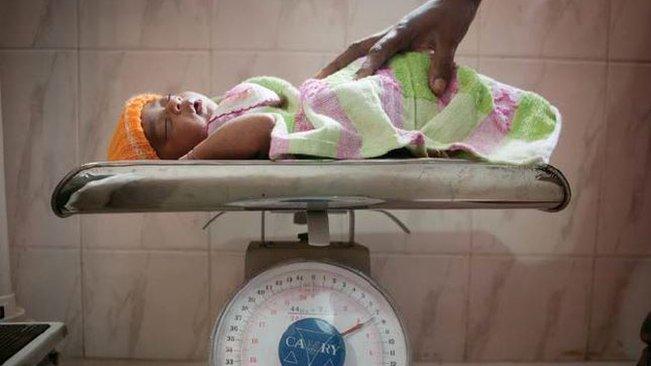One in five child deaths 'preventable'
- Published

Researchers found death rates were higher in boys than girls at all ages
One in five child deaths in England could be prevented, according to reports in The Lancet.
Around 5,000 die each year, with 15- to 17-year-olds having the highest proportion of preventable deaths from suicide, accidents, abuse and neglect.
The University of Warwick researchers said more could be done to cut future deaths by tackling child poverty and spotting serious illnesses sooner.
Overall, child mortality in high-income countries has fallen to very low rates.
In a series of three reports, external looking at child deaths in high-income countries, researchers used previously published figures to compare death rates.
They also looked in detail at patterns of child mortality in England and Wales and sometimes for the UK.
In the past one hundred years, the number of child deaths in England and Wales has fallen in all age groups, the report says.
Income gap
Infant deaths - before the age of one - which have always shown the highest mortality rates, decreased from 7.88 per 1,000 live births in 1990 to 4.36 in 2011.
In other age groups, deaths have fallen by nearly 50% since 1990. Deaths of children diagnosed with chronic, life-limiting diseases make up at least half of all child mortality in England and Wales.
However, the report said compared with many other European countries, child mortality in the UK remained high because of the income gap between rich and poor.
The reports found that child mortality rates tended to be higher in the Midlands and north of England, and lower in the south and east, appearing to affect poorer families disproportionately.
At all ages, death rates were higher in boys than girls.
Dr Peter Sidebotham, series lead author and associate professor of child health at the University of Warwick, said more could be done to prevent child deaths across all age groups.

Mortality rates among children are highest during their first year of life
"It needs to be recognised that many child deaths could be prevented through a combination of changes in long-term political commitment, welfare services to tackle child poverty, and health-care services.
"Politicians should recognise that child survival is as much linked to socio-economic policies that reduce inequality as it is to a country's overall gross domestic product and systems of healthcare delivery."
Preventing deaths
Focusing on three "key areas" where child mortality rates could be improved, the researchers said strategies to promote a healthy, no-smoking lifestyle to women during pregnancy would help to reduce stillbirth and perinatal deaths, up to seven days after birth.
To prevent child deaths due to natural causes, they recommended "enhanced and extended training of family doctors" and improved communication with parents and families when it came to spotting signs of illness or failing health.
They also said "there was a strong economic and ethical argument to target prevention strategies at the most vulnerable" to reduce deaths due to injuries and suicides in older children.
The authors concluded that all countries should explore the different factors that contribute to every child death.
They said this knowledge could be used to help prevent more deaths.
Dr Sidebotham said: "Child death review processes that are being developed in many high-income countries provide important details of the circumstances surrounding a death and can add to a greater understanding of how and why children die.
"To be effective, child death reviews need to conducted by multi-disciplinary teams that share information about the circumstances of child deaths, with the goal of preventing future deaths and improving child health and welfare."
Mental health support
Dr Hilary Cass, president of the Royal College of Paediatrics and Child Health, said the figures were a serious wake-up call for both healthcare professionals and policymakers.
She said the high levels of deaths caused by accidents, suicides, and abuse in 15-19-year-olds was worrying and action was needed.
"It means equipping all professionals with the knowledge and skills to identify mental health difficulties early, better access to mental health support for children and young people, and making sure that Ofsted's inspection framework for early years settings, schools and colleges includes consideration of the extent to which these settings promote children and young people's social and emotional wellbeing."
She added: "We also want to see some practical measures such as the reduction of the national speed limit in built-up areas to 20mph and the introduction of Graduated Licensing Schemes for novice drivers to reduce road deaths."
- Published30 September 2013

- Published29 March 2011
- Published25 February 2014
